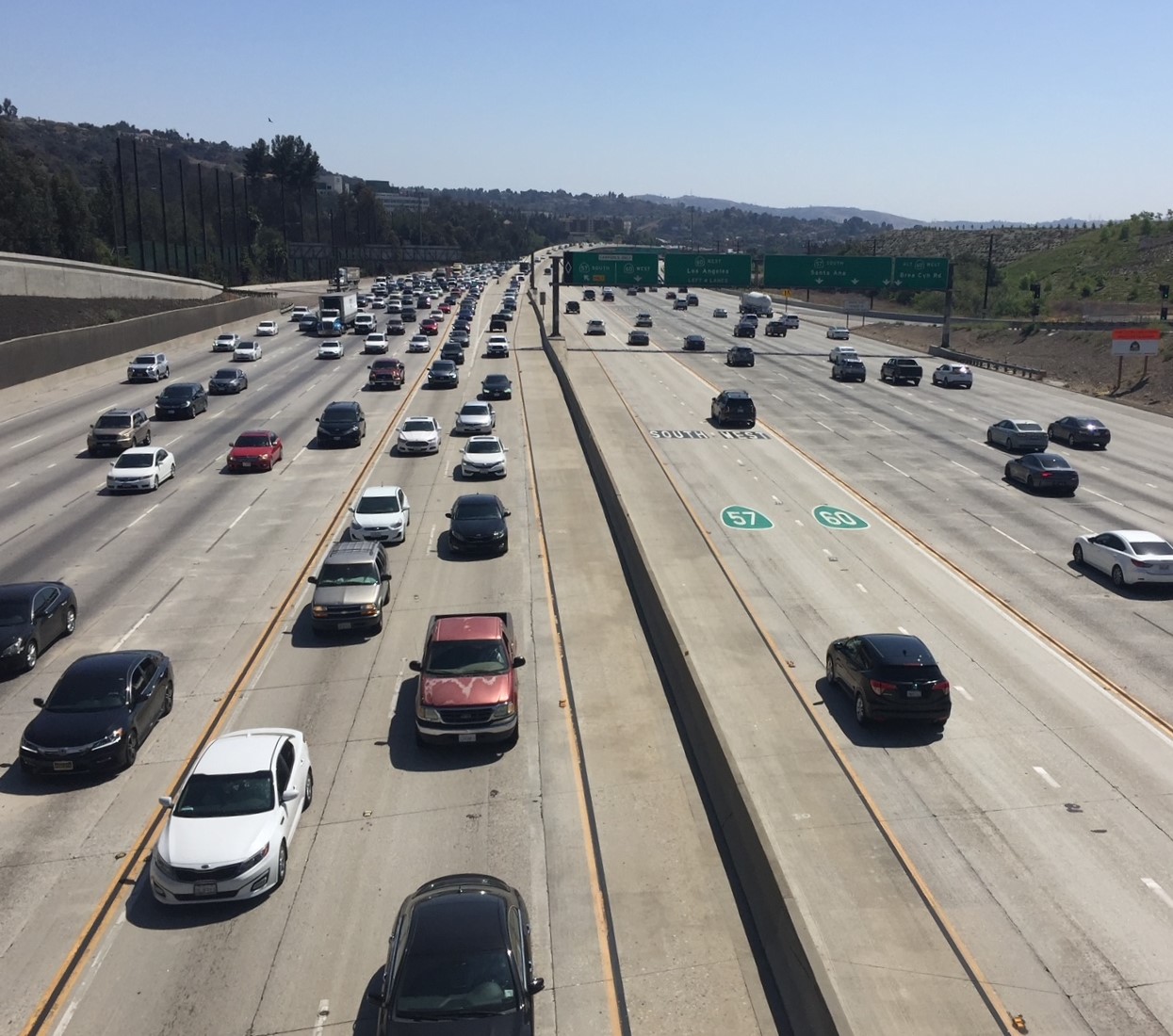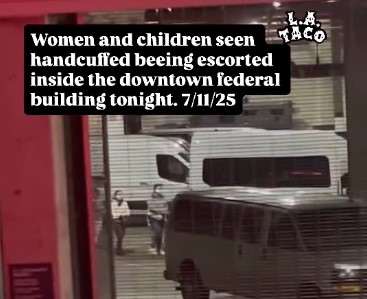Metro is pushing to begin construction of the major portions of its half-billion-plus dollar project to expand the capacity of the 57/60 Freeway interchange, located in the eastern L.A. County.
In the city of Diamond Bar, alongside the City of Industry, the 57 and 60 Freeways merge together for about two miles.
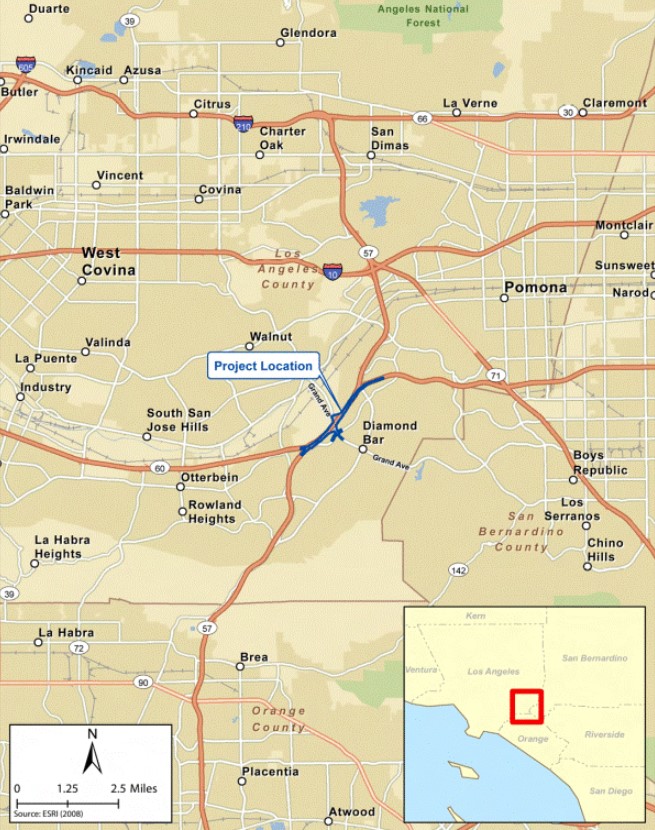
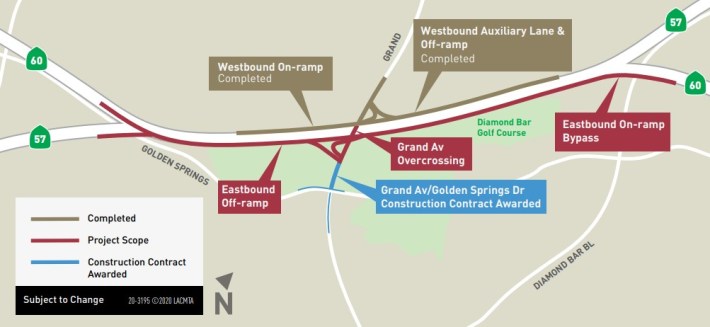
The 57 runs north/south. The 60, east/west. They share the interchange area running diagonally southwest/northeast. (This post utilizes Metro's convention of mainly describing the project in terms of the 60 Freeway's east/west orientation.)
As with so many L.A. County freeway expansion megaprojects, Metro and Caltrans have been working on the project for many years - but overall and up-to-date project information is still somewhat difficult to track down.
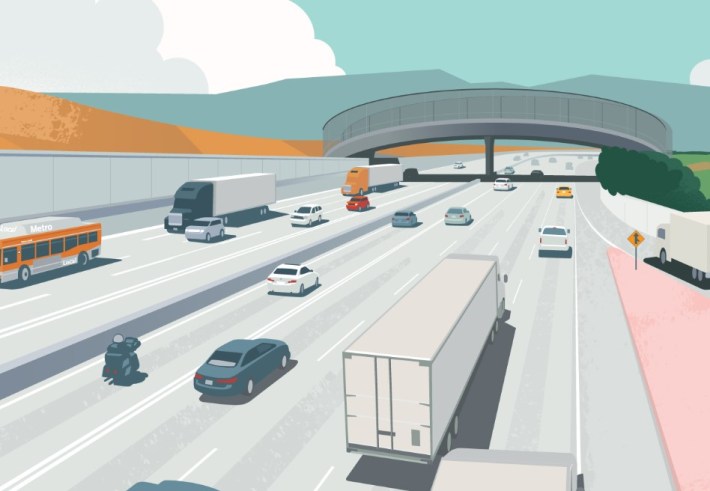
There are various 57/60 project websites with project information: the vestigial FREEtheWAY site [site relegated to Wayback archives], two Metro project webpages (slick, non-slick), project pages on city (Diamond Bar, City of Industry) and sub-region (San Gabriel Valley Council of Governments - SGVCOG) websites, fact sheets (2020, circa 2017), plus barely-populated social media stubs (Instagram, Facebook, Twitter). Some 57/60 sub-components have their own separate project webpages.
The various sites justify the 57/60 expansion due to the "severe bottleneck," "weaving conflicts," "truck accidents," and delays to commuters and freight. Metro and Caltrans tout project benefits including "Cleaner Air," "Healthier Local Environment," and "reducing traffic congestion."
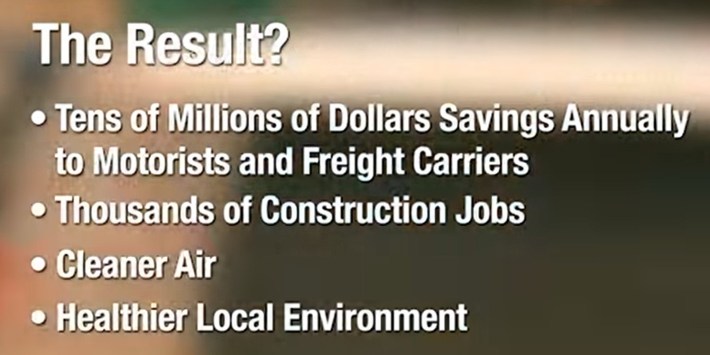
The project's environmental studies (a FEIR/FONSI - Final Environmental Impact Report/Finding of No Significant Impact) were approved in 2013. Metro's 2020 57/60 fact sheet noted that the environmental clearance needed "to be reviewed and updated to reflect changes to current conditions since its [2013] completion." Streetsblog did not find any indication that that revalidation process, then scheduled for 2021, was completed. (Emails to Metro and the SGVCOG yielded no response to SBLA's questions, including regarding revalidation.)
A lot of the 2013 project justification is based on discredited Level of Service (LOS) analysis, which still shows up on various project webpages. For example, the SGVCOG project webpage states that "[57/60 Freeway] commuters experience long delays with the Level of Service (LOS) approaching B and D for both the morning and afternoon commutes. […] Without this Project, operations on both SR-57 and SR-60 freeways will be at LOS of “F” with severe congestion lasting for several hours daily. [57/60 project] will... improve LOS in 57/60 Confluence from an “F” to a “C” and better."
In 2019, the Metro board approved a $29.5 million contract [staff report] to outsource much of the 57/60 project management work to the SGVCOG. The COG has managed construction contracts for the surface street widening and golf course narrowing (see below). The COG is also managing utility relocation, mitigation, approving eminent domain, etc. Other than the golf course (see below), the overall 57/60 expansion does not greatly impact adjacent properties. The expansion does not appear to demolish any homes. It does trim small portions of more than a dozen parcels, mostly taking undeveloped areas and in a few cases small parts of existing parking lots.
Like many Metro/Caltrans freeway widening megaprojects, the 57/60 project is broken up into multiple phases and sub-components. Some of these component budgets overlap, so it is difficult to ascertain the overall project budget. Metro's Measure M sales tax expenditure plan shows a $770 million overall budget, which includes a $205 million in Measure M funds scheduled for a 2025 project groundbreaking. Metro is now looking to accelerate the project, ahead of the voter-approved 2025 date.
COMPLETED 57/60 CONSTRUCTION
This post does not include full details on work already completed.
During the last decade, Metro and Caltrans added a new general purpose lane on the north (westbound) side of the 57/60. The widening created what is called an auxiliary lane - a general purpose lane that extends between on- and off-ramps. This included adding a new on-ramp from southbound Grand Avenue to the eastbound 57/60 and widening the existing ramps on the northeast side of Grand.
57/60 CONSTRUCTION IN PROGRESS
Construction is currently underway on two component projects adjacent to the 57/60 interchange:
1 - Diamond Bar Golf Course Renovation Project
In order to widen the freeways, right of way is being taken from L.A. County's Diamond Bar Golf Course. The public golf course will shrink 5 percent - from 171.3 acres to 161.9 acres. Last October, the County approved Metro/Caltrans paying $28.25 million for the 9.13 acres of lost park land. Losing the land meant that the course itself needed to be reconfigured, which is a $43.9 million construction contract. Over all, the golf course narrowing/reconfiguration project is costing $91 million, though that includes some utility relocation.
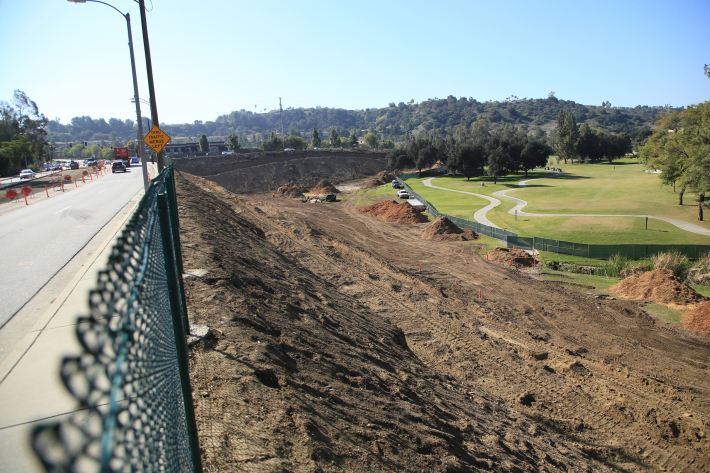
2 - Grand Avenue and Golden Springs Drive Improvement Project
Metro and Caltrans are widening surface streets that lead into the 57/60 interchange, primarily Grand Avenue, which crosses over the middle of the 57/60 freeway interchange, bisecting the golf course. This street widening portion of the megaproject seems to be at cross-purposes with the overall project goal of reducing congestion at the 57/60 bottleneck. Namely, widening Grand will facilitate more car traffic entering the middle of the already congested interchange, worsening car congestion there. But Metro and Caltrans freeway widening projects commonly widen the surface streets and ramps leading to the freeways.
This $16.8 million sub-component project widens portions of Golden Springs Drive (which nearby remains mostly ~64 feet wide but will swell to 85 feet wide at Grand) and Grand Avenue (at Golden Springs, Grand widens from its prior ~82 feet to 101 feet), including adding multiple new turn lanes. These roadway widenings contribute to the loss of golf course park land noted above. The surface street project also includes sidewalks, lighting, landscaping, and rebuilding/lengthening the golf course tunnel under Grand.
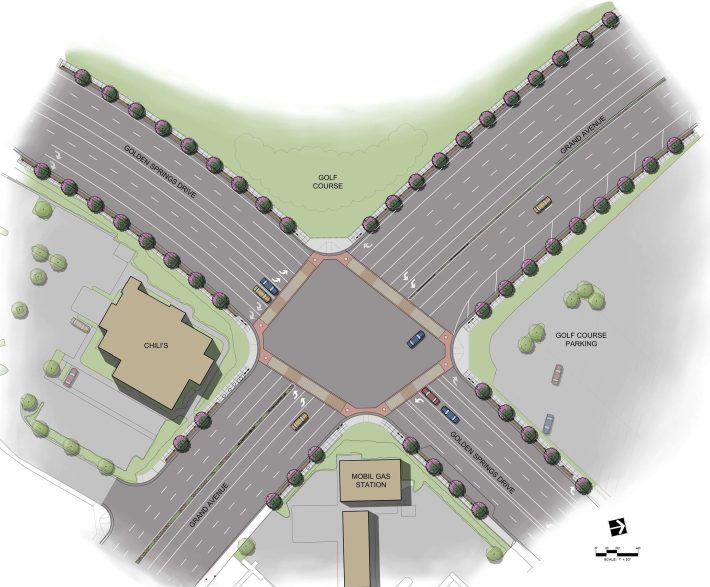
FUTURE 57/60 CONSTRUCTION
There are quite a few aspects of the main $420.2 million portion of the 57/60 interchange project. This phase widens the eastbound 57/60, adding one new general purpose lane.
In addition to widening the interchange's main trunk, the project will add two new viaduct-type ramps to allow some drivers to bypass some of the interchange.
At the southwest end of the project will be a new mile-long Y-shaped two-lane northbound exit ramp for Grand Avenue.
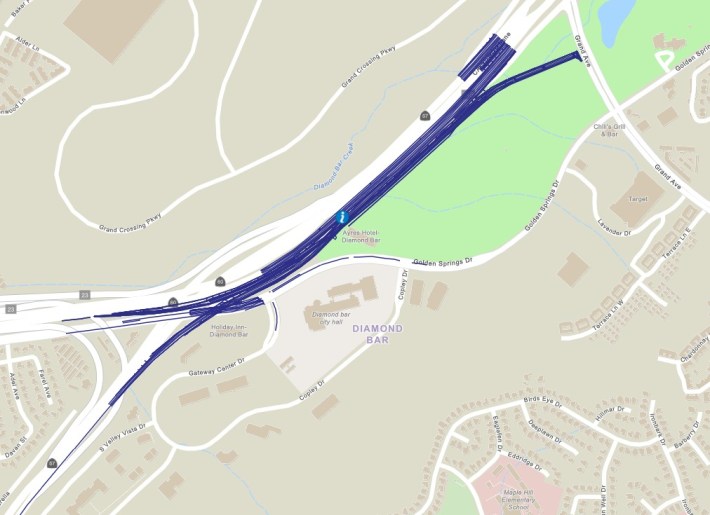
Eastbound drivers heading to Grand - from either the 57 or the 60 - will be able to bypass the main congested interchange trunk. Part of the new off-ramp flies over the golf course; designs show sound walls located inside the golf course to help minimize freeway noise.
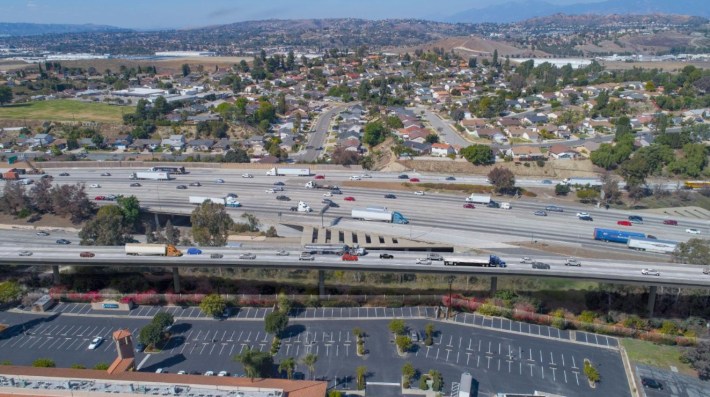
The project also includes a new two-lane-wide half-mile-long elevated bypass structure spanning over Diamond Bar Boulevard and Prospectors Road. The bypass will give eastbound drivers an alternative way to avoid merging leftward to continue east onto the 60 Freeway. The structure touches down just east of Diamond Bar Boulevard, where the 60 East on-ramp will be reconfigured and widened from two to three lanes.
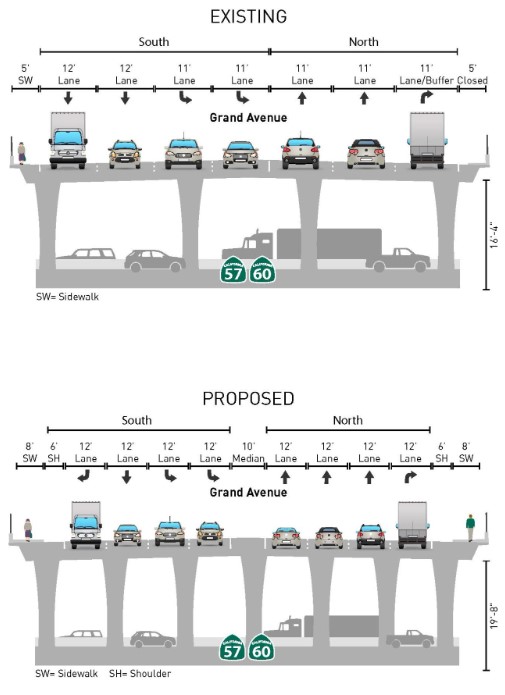
In the middle of the project, Grand Avenue will be widened with wider freeway on- and off-ramps. In order to widen the bridge that carries Grand over the freeway, the existing bridge will be demolished and replaced. The existing Grand Avenue Bridge has a 72-foot-wide roadway; its replacement will have a 118-foot-wide roadway.
Over all, between the additional general purpose lanes, the new and widened ramps, new bypass structures, the project adds additional lane miles: at least seven new miles of freeway lanes (including ramps), and a new mile-plus of surface street lane miles. According to the UC Davis calculator, this expansion is expected to generate 65+million additional vehicle miles traveled (VMT) per year, resulting in roughly 30,000 tons of greenhouse gas emissions annually.
The current and future phases of the project have received a combination of local, state, and federal funding:
- Metro Measure M sales tax: $205 million (as noted above, scheduled for a 2025 groundbreaking)
- State Trade Corridor Enhancement Program (TCEP) grants: $22 million for design and right-of-way (awarded 2018), $217.9 million for construction (awarded 2020)
- Federal earmark: $18 million (approved 2021)
- Federal INFRA grant: $30 million (awarded 2021)
From Measure M forward, the project funding totals $492.9 million. Though Metro is pushing to accelerate the project schedule (with construction included in Metro's proposed FY22-23 budget), it is not clear if the funding in hand is sufficient to complete the megaproject.
Follow Streetsblog L.A. for continued coverage of this project, and other Metro/Caltrans freeway widening.
